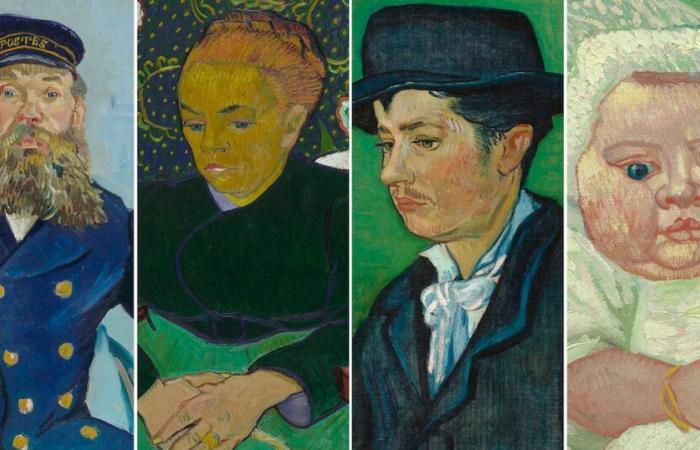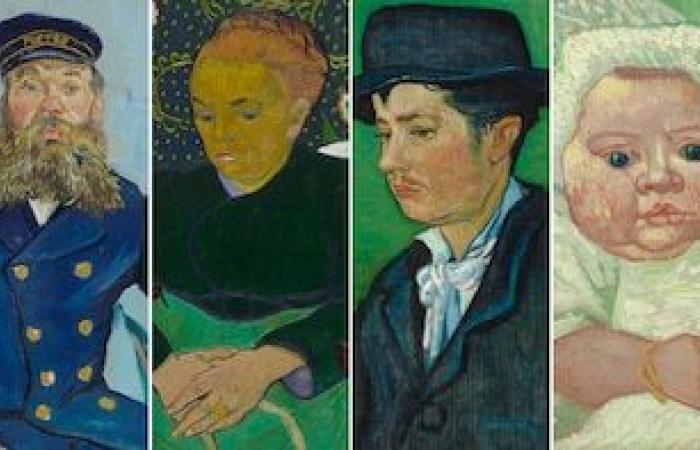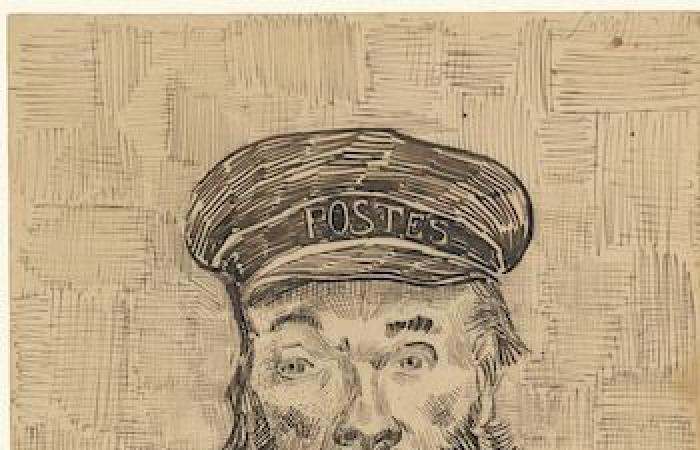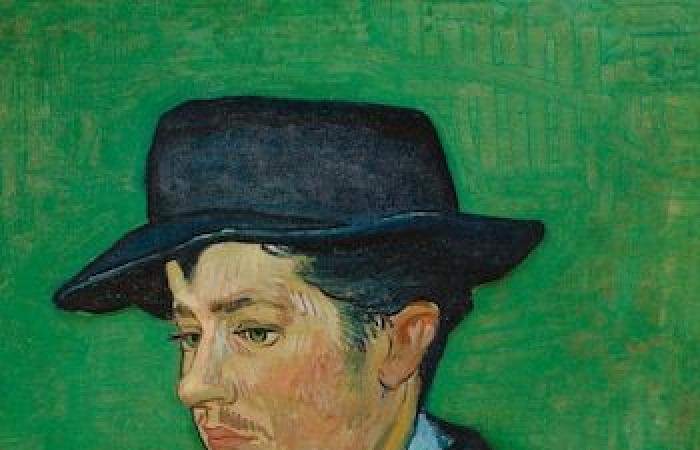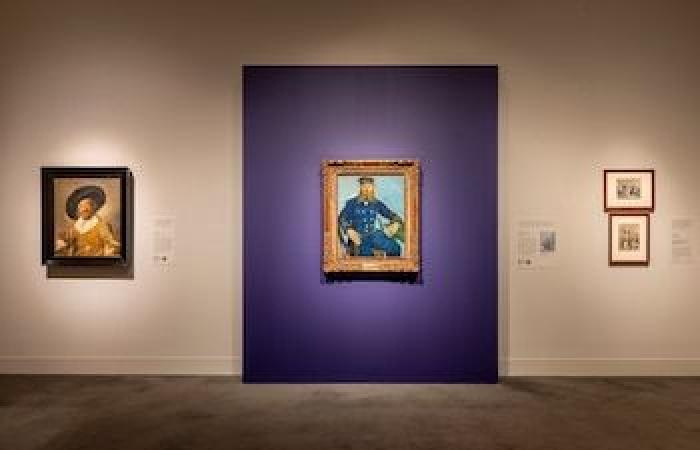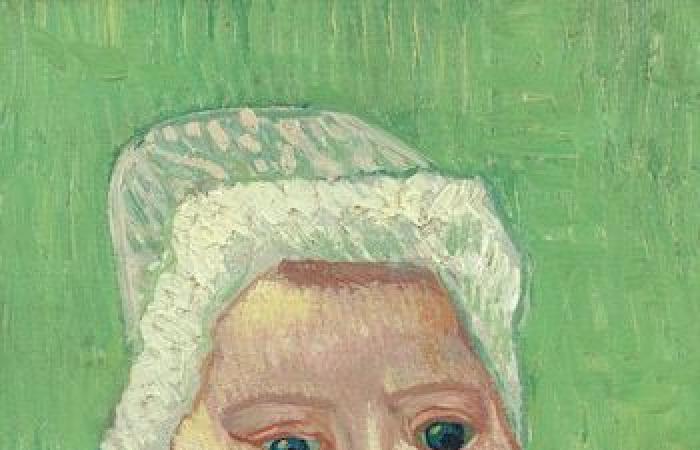Van Gogh: The portraits of the Roulin familyin it Boston Fine Arts MuseumIt is an exhibition on the human connection. A kind of boutique blockbuster – if something like that can exist – is dedicated to the portraits of Vincent van Gogh of a single family. I left the sample with a full heart, not so much warm and wobbly and exposed, as a freshly stripped oyster of his shell.
The exhibition brings together more than half of the 26 portraits that the Dutch painted from the Roulin family, composed of mailman Joseph, his wife Augustine and his three children, Armand, Camille and Marcelle.
As often happens with Van Goghhere we witness a creative torrent. All the portraits of the Roulin were made in a period of eight months, which has been from the summer of 1888 to February of the following year.
The beginning and end of that period, one of the most famous in art history, frames the arrival of Paul Gauguin south of France (where Van Gogh I dreamed that both would build a lasting creative community) and the frightful event that led to Gauguin to flee, ending decisively to his incipient collaboration. After a discussion with Gauguinand obviously seized by an emotional tumult, Van Gogh A small part of the ear was cut, it wrapped it and personally delivered the macabre package to a prostitute in a near brothel.

Give Van Gogh I chose to spend so much time portraying a family. One could legitimately ask, what did this lonely man of the Roulin need? The question sneaks into what seems most moving and almost sacred in the portraits of the Roulin family of Van Gogh.
What they register powerfully is that other people are more than the purposes that serve in our own lives, rather than (paraphrasing a trite term of the therapy) “the needs they meet.” A true connection, insist silently, is never transactional. Joseph Roulin may be dressed in his elegant blue government uniform. But Van Gogh He presents it as more than a mailman, even more than a loyal friend.
In the same way, Augustine Roulin is more than his wife, more than a mother. Each family member, in other words, is presented to us with their own intact and inviolable singularity. In addition, each one is represented with a kind of wild immediacy, creating the feeling that they could get out of their own contours.
A global memories industry kitsch assaults our collective desire for a direct connection with Van Gogh. But this artist cannot be sentimentalized credible. Despite its rich coloration and its burning beauty, its paintings are stubborn and unequal, such as the artist himself. It required many care. He was not an easy friend.

However, it seems that in Joseph Roulin he found an excellent friend. The mailman and the artist met shortly after Van Gogh He would move to Arles in the spring of 1888. In the summer, they started talking about a drink in the local coffee.
Van Goghwho had endured many weeks of isolation, then knew that he had found his model. Roulin had “a somewhat similar head to that of Socrates,” he wrote Vincent To his brother Theo“Almost without a nose, high front, bald, small gray eyes, cheeks full and very red, a large beard, salt and pepper, large ears.” A passionate drinker, the mailman was “a fervent republican and socialist.” “Reason very well and know many things.”
The day that Van Gogh He wrote this, Augustine had just given birth, and Joseph was “very good and radiant of satisfaction.” He concluded that he expected to be able to paint the baby soon.
Who knows what the Dutch eccentric Roulin and their strange ideas about art thought, but tolerated him. He painted baby Marcelle, awkwardly sustained by Madame Roulin, towards the end of that year, and then four more times in December. He also painted (three times) the young camille, with thoughtful and low eyes, and (also three times) to the eldest son, Armand, a young man with a hat and a fine mustache.

After experimenting with how to portray Augustine, he undertook a series of five almost identical paintings. All show it sitting in a wooden chair against a decorated floral background. His hands, folded on his lap, hold a rolled rope attached to an out of sight. His lips are pursed. Its rough face has a spectral acid green that, somehow, works with the rich general key of dark green and red. He wears the hair strongly collected back and his narrow, intimidating gaze, he has nothing maternal.
We tend to associate Van Gogh With landscapes and lifes. But just before his death, the artist wrote that what he was most passionate about was “the portrait, the modern portrait.” He loved his Dutch predecessors, among them Rembrandt y French neckby the vitality of their portraits. “A painted portrait is a sentimental thing,” he wrote to his sister, “made with love or respect for being represented.” He wanted his portraits to transmit that same bubbling sensation in a new modern style.
“Modern”, for Van Goghit meant intense and saturated colors, compositions inspired by Japanese engravings (flat, ornamental, often asymmetric) and a sense of human uniqueness. The almost religious intensity with which Van Gogh He captured this uniqueness reminds me of the poet’s idea more Gerard Manley Hopkins that every living thing expresses his own unique internal life (or what he called “insapape”): “Every mortal thing does only one thing and the same: / Outside that inner being that each one dwells; / it is realized – express their identity; / exclaims: what I do is me: for that I came.”
Today, in their ornate and heavy frames, the massively insured paintings of Van Gogh They seem canonical and timeless. But, in reality, they are extraordinarily peculiar.

Each has its own precious quota of clumsiness. Leave them for a few seconds and something in them breaks reliably towards life. In my eyes, that something – whatever it is – is provisional, fragile and vulnerable.
Look, for example, the hands of the model in the portrait of Joseph Roulin of 1888 of the Boston Museum. Of the nine portraits of the mailman, this was the first and remains the best. Joseph’s subsequent paintings show only his bust, usually against a floral background. Boston’s painting shows it comfortably in a chair, to the knees, its real blue uniform singing against a beautiful blue sky background.
One hand rests awkwardly on the thin arm of the chair, the other on the outgoing corner of a table. Both are inclined towards the lower center, completing an implicit rhombus that begins with the diagonals of their bifurcated and dense beard and continues through its superior arms.
The hands themselves seem arthritic and disheveled. Look closely, they are like minipaissues: furrows, undulating, tints of green and pink. They do not resemble any other hand in art history, and yet Van Gogh He painted them as he saw them.

The curators –Katie Hansonof the MFAy Nienke Bakkerof the Museo Van Gogh In Amsterdam, which will host a modified version of the exhibition later this year – they have distributed the portraits of the Roulin throughout the sequence of galleries of the exhibition, giving each work a wide space, but frustrating the desire to make direct comparisons. Family works are complemented with related paintings of Van Goghworks of (among others) Gauguin, Rembrandt y Halsas well as Japanese engravings, photographs and letters.
The letters, presented in a gallery separated near the end of the sample, were not written by Van Gogh (just celebrated as one of the best card writers), but for Joseph Round. When reading them, I felt an inexplicable weight accumulating in my body. It was as if someone was placing me stones in my pockets in silence.
Some of the cards were sent to Van Gogh’s family after Joseph visited Vincent In the hospital after your crisis. (It is revealing that, while Gauguin He fled from Arles, Joseph did not abandon his peculiar friend). After his first visit, he thought that Van Gogh He was practically lost and expressed it in his letter. But soon he realized that his friend was improving. All their letters vibrate with compassion, respect and sensitivity.
Other Roulin letters were written directly to Van Gogh After this was admitted to the Saint-Rémy psychiatric hospital, northeast of Arles.

I don’t know exactly why these beautiful letters dejected me. I was not assaulted by sentimental thoughts on how, 18 months after painting the portraits of the Roulin, the poor Vincent I would be dead. I was only beaten by an obvious truth: that friendship, affection, family affection is more or less, everything we have. We can and must continually renew them. But we can never really assure them. After all, they are mere feelings, constantly changing and always floating drifting.
– – –
Van Gogh: The portraits of the Roulin family will be exhibited until September 7 at the Fine Arts Museum de Boston.
Fuente: The Washington Post.
Fotos: Philadelphia Museum of Art: Gift of Mr. and Mrs. Rodolphe Meyer de Schauensee, 1973/Courtesy of the Philadelphia Museum of Art/Courtesy Museum of Fine Arts, Boston; J. Paul Getty Museum, Los Angeles/Courtesy Museum of Fine Arts, Boston; Collection Museum Boijmans Van Beuningen, Rotterdam. Acquired with the collection of D.G. Van Beuningen/Courtesy Museum of Fine Arts, Boston; Museum of Fine Arts, Boston; Private Collection, Hong Kong/Courtesy Museum of Fine Arts, Boston y Gift of Robert Treat PaineI II/Museum of Fine Arts, Boston.

